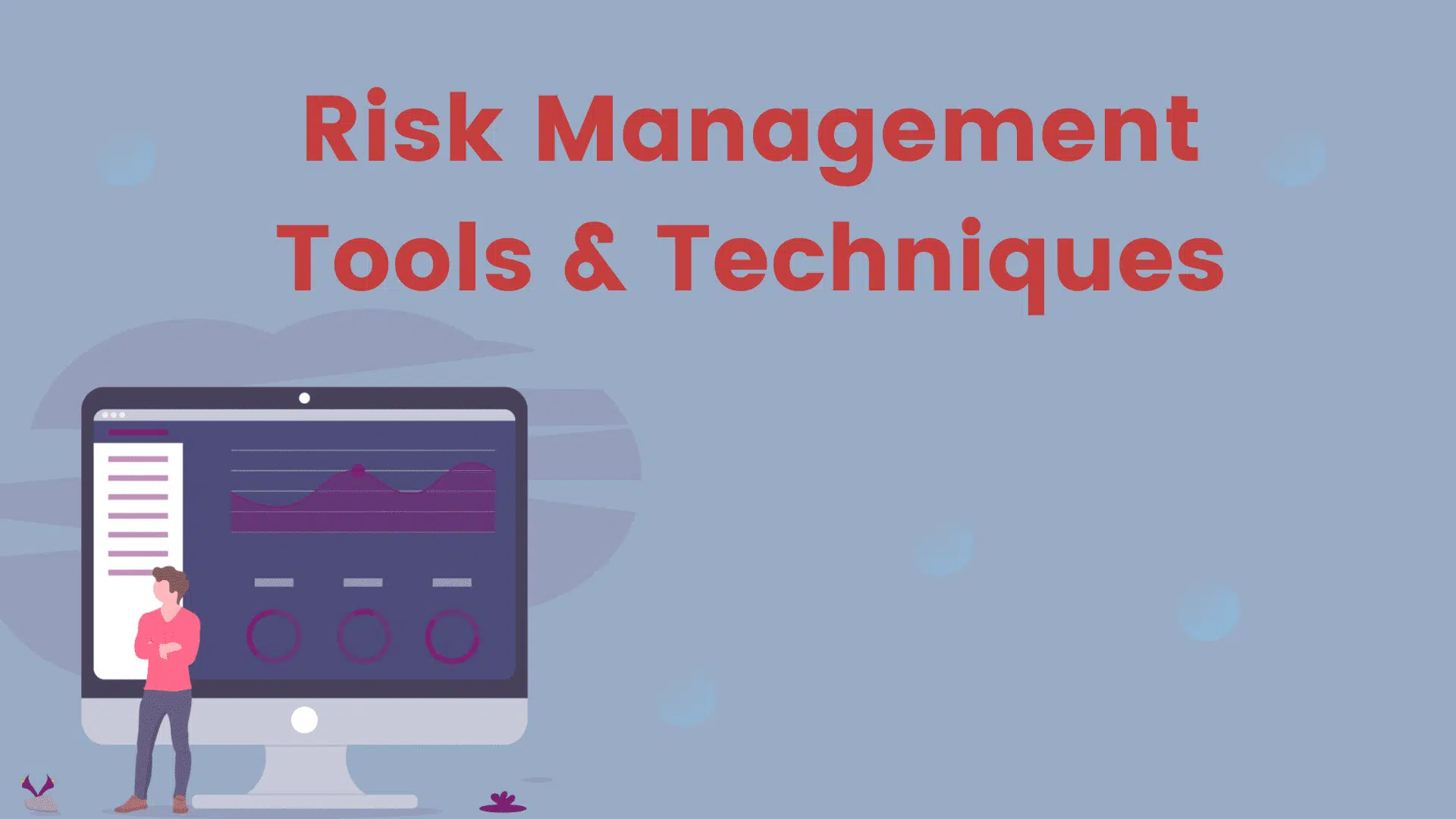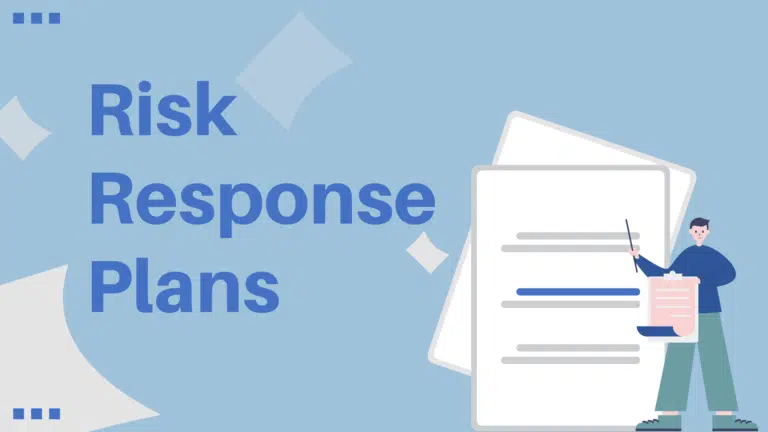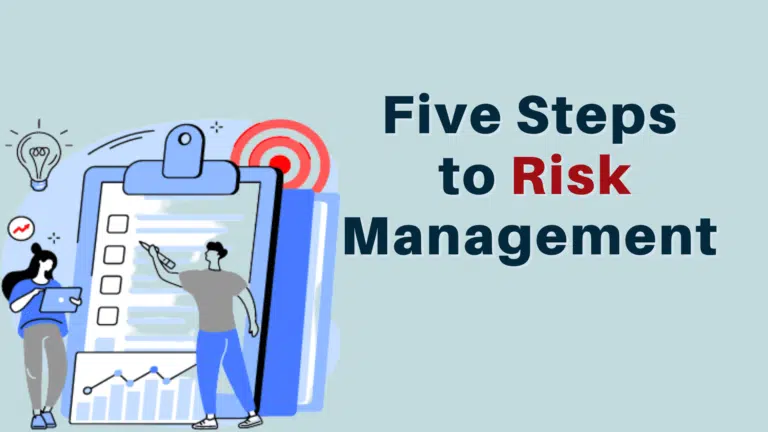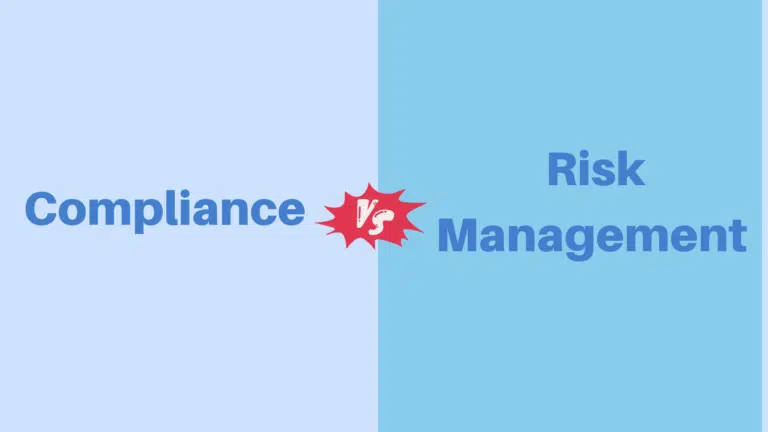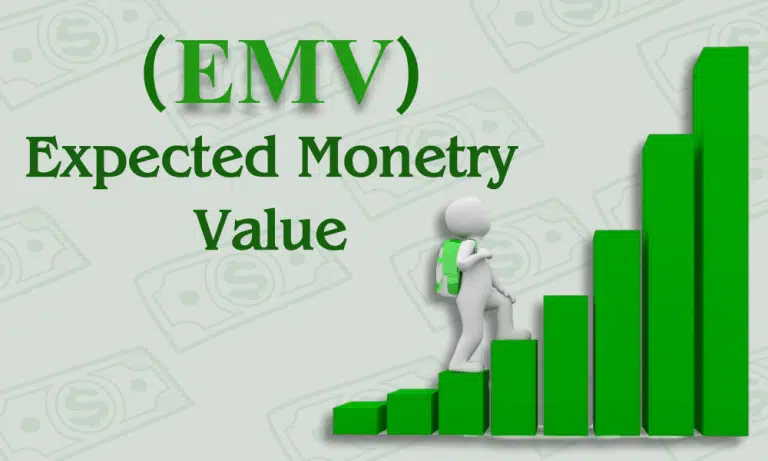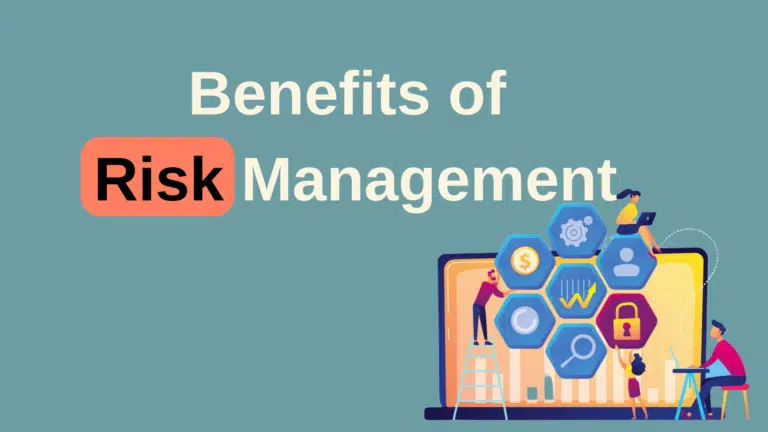Every project has risks, and many risk management tools and techniques exist to manage these risks. Risk management is a key part of project management.
Today’s blog post will provide the 12 best risk management tools and techniques.
These tools are popular, and a deeper understanding of these tools will help you manage risk in your project efficiently.
12 Best Risk Management Tools and Techniques
- Risk Register
- Risk Report
- Brainstorming
- SWOT Analysis
- Probability and Impact Matrix
- Root Cause Analysis
- Risk Data Quality Assessment
- Checklist Analysis
- Delphi Technique
- Decision Tree Analysis
- Scenario Analysis
- Project Management Software
1. Risk Register
A risk register is a basic risk management tool. This is a central repository for all identified project risks.
This tool lets you record the identified risks and their details. You can include the risk probability, impact, categories, and assessment details and then prioritize the risks. You can include qualitative and quantitative risk analysis and risk response plans. You can include the risk status (e.g., whether it has occurred).
A risk register also includes low-priority risks, which only need to be monitored.
A risk register is a key tool for controlling project risks and providing all information to stakeholders. A risk register supports effective decision-making by providing stakeholders with updated risk information.
Stakeholders will know the consequences and trade-offs involved in risk-related decisions and ensure that risks are considered, along with potential benefits. A risk register facilitates stakeholder communication and collaboration and provides a common understanding of risk management.
A risk register is a dynamic tool that requires regular updates to ensure the project proactively manages risks and remains resilient.
2. Risk Report
A risk report is another great risk management tool that helps the project manager communicate the effectiveness of the risk management plan. The project manager takes input from the risk register to develop the risk report.
A risk report helps stakeholders understand the overall project risk profile by concisely presenting risk information. A risk report helps the project manager get stakeholder support for risk management activities. It enhances transparency, facilitates informed decisions, and promotes effective risk management.
A risk report includes an executive summary with a high-level overview of the project risk assessment. The report may include high-level quantitative assessments or qualitative ratings to explain the project’s overall risk level. A key part of a risk report is the section on the effectiveness of the risk management process.
Stakeholders can see how risk management benefits the project and the organization. The report may also include a section on risk trends or emerging risks, thus enabling stakeholders to stay informed of evolving threats and adapt their risk management strategies accordingly.
3. Brainstorming
Brainstorming is the most popular risk management technique for risk identification. Brainstorming is a group problem-solving technique that encourage contributing ideas and solutions. This technique requires intensive discussion, in which all group members are encouraged to suggest as many risks as possible based on their experience and knowledge.
Project managers can start the brainstorming sessions by reviewing project documentation, historical data, and past lessons learned. They can get these documents from their organizational process assets repositories.
Brainstorming is a structured and collaborative approach that fosters innovation, encourages diverse perspectives, and promotes the exploration of new possibilities. Participants are encouraged to generate ideas quickly without filtering or evaluation. At the initial stage, the focus is on quantity rather than quality. All ideas are welcomed and recorded.
Group brainstorming follows a structured format, with a facilitator guiding the process. The facilitator poses a specific problem, and participants are encouraged to contribute ideas freely. By combining diverse perspectives, experiences, and knowledge, brainstorming sessions can produce a rich array of ideas and potential solutions that may not have otherwise emerged through individual thinking.
After the brainstorming session, you will review the collected ideas, refine, and evaluate to identify the most promising.
4. SWOT Analysis
SWOT stands for “Strengths, Weaknesses, Opportunities, and Threats.” SWOT analysis is a strategic tool to assess an organization’s internal strengths and weaknesses and external opportunities and threats. It provides a structured framework to evaluate the current situation and make informed decisions.
Strengths are internal factors that give an organization a competitive advantage. Strengths include unique skills or expertise, strong brand recognition, a loyal customer base, efficient processes, and superior product quality. By identifying their strengths, organizations can also identify their opportunities.
Weaknesses are internal factors; they include a lack of resources or funding, outdated technology, poor customer service, ineffective marketing strategies, and a high employee turnover rate. Recognizing weaknesses can help identify areas that need improvement. Weaknesses also help identify many risks.
Opportunities are external factors that organizations can leverage to their benefit. These can arise from emerging markets, technological advancements, changing consumer preferences, new partnerships or collaborations, and favorable government policies. Opportunities provide positive risks.
Threats are external factors that pose risks to the organization, including intense competition, economic downturns, legal or regulatory changes, disruptive technologies, shifts in consumer preferences, and negative publicity. Recognizing threats helps you prepare and implement risk management strategies to mitigate risks’ impact.
5. Probability and Impact Matrix
The Probability and Impact Matrix assesses the likelihood of an event’s occurrence and the severity of its impact. Combining these two parameters provides risk insights and helps you develop risk mitigation plans.
The Probability and Impact Matrix helps you use resources optimally to avoid risks and eliminate the need to manage low-priority risks.
This matrix categorizes risks into qualitative terms (e.g., “low, medium, and high”) or assigned numerical values. The matrix provides the severity of the risk (e.g., financial losses, operational disruptions, reputational damage, safety hazards, legal implications, etc.). After determining the probability and impact of all risks, you can plot them on a matrix.
The matrix is divided into cells or zones, each representing a specific risk level (e.g., “Low Probability/Low Impact,” “High Probability/Low Impact,” “Low Probability/High Impact,” or “High Probability/High Impact”).
You can place the risks in the corresponding cells based on their probability and impact ratings. Risks in the “High Probability/High Impact” cell are critical and demand immediate attention. Risks in the “Low Probability/Low Impact” cell are of lesser concern.
6. Root Cause Analysis
Root Cause Analysis (RCA) is a systematic approach to uncovering the basic reason behind a failure. By understanding and addressing the root cause, you can develop effective solutions to prevent reoccurrence and improve system performance.
Root Cause Analysis is a quality management tool that can also be used in risk management. This tool is useful when any risk has occurred. Root Cause Analysis identifies the factors that can eliminate or mitigate the problem and prevent its reoccurrence.
Additionally, by using tools to find the root cause of the problem, you can uncover any additional risks and their underlying causes.
The Root Cause Analysis includes several steps. First, define the problem and ensure a common understanding among the team members. Next, analyze the information to identify the cause(s) of the problem; these are the observable events or actions that directly contributed to the undesirable outcome.
To find the root cause of a problem, ask the following three questions:
- What happened?
- How did it happen?
- Why did it happen?
Root Cause Analysis recognizes that addressing only the immediate causes may not prevent the problem from reoccurring. Therefore, to identify the root causes, you must conduct further analysis.
You can ask “why” multiple times to trace the causal chain of events backward to the fundamental cause. After finding the root cause, you can develop and implement corrective actions.
7. Risk Data Quality Assessment
In risk management, most data is collected through expert judgment, which can have biases. You must remove the biases and ensure that the data is high quality. Risk data quality assessment helps you do this.
Risk Data Quality Assessment helps evaluate risk data’s integrity, quality, and reliability, thus ensuring you can make well-informed decisions based on trustworthy information. It assesses various aspects of risk data for its accuracy, completeness, consistency, timeliness, and relevance.
This assessment aims to identify issues and gaps that may impact the organization’s ability to understand and manage risks effectively. By conducting a comprehensive evaluation, you can identify areas for improvement and take corrective actions to enhance the risk data quality.
Assessing data accuracy involves examining the data sources, verification processes, and data entry methods to ensure that the information is recorded correctly and reflects the actual risks. Assessing data completeness involves evaluating whether all necessary data elements are present and whether there are any missing or undocumented risks.
Inconsistencies in risk data can lead to confusion and hinder accurate risk comparison. Data consistency assessment involves reviewing data definitions, classifications, and standards to ensure consistency across the organization.
Assessing data timeliness involves evaluating data collection, reporting, and updating processes to ensure that risk information is updated and available when needed.
Assessing data relevance involves evaluating whether the collected data is directly related to the organization’s risks and whether it provides meaningful insights needed for decision-making.
Assessing data reliability involves examining data sources, data management practices, and data governance processes. Reliable data is obtained from trustworthy sources; it undergoes rigorous quality control measures and is supported by robust data management protocols.
Risk Data Quality Assessment results can help you take appropriate actions to improve risk data quality.
8. Checklist Analysis
Checklists are predefined lists of items to review and verify whether certain regulatory requirements, industry standards, best practices, and/or internal policies and procedures are being met. This is the easiest risk management tool to use and provides the quickest results.
You can circulate a checklist containing pre-identified risks and ask their team members and other stakeholders to check the list for completeness and add any missed risks. You can find the risk checklist templates in the project’s organizational process assets.
After developing the comprehensive checklist, you begin the checklist analysis. During this stage, each item on the checklist is reviewed and assessed to determine its compliance. This can involve gathering evidence, conducting interviews, observing activities, or examining documentation to validate whether the criteria are being met.
Checklist Analysis lets you proactively identify and address potential risks. By reviewing each item on the checklist, you can identify gaps, deviations, or areas of non-compliance and take corrective actions to mitigate these risks accordingly.
9. Delphi Technique
The Delphi Technique is a well-known qualitative risk analysis technique developed in the 1950s by the RAND Corporation for forecasting and policy analysis.
Some experts are not comfortable providing their ideas openly. So, you can use the Delphi Technique to collect ideas from them discretely.
The Delphi Technique is a structured, iterative method that anonymously collects experts’ ideas through questionnaires or surveys. It reaches a consensus by reducing bias, managing group dynamics, and maximizing participants’ expertise.
The Delphi Technique involves the following steps.
First, you select experts based on their knowledge, experience, and expertise. Next, you send the experts questionnaires or surveys addressing the problem(s).
The questions can be open-ended or structured, depending on the nature of the problem and the desired outcomes. You collect and compile the responses from the first round of questionnaires; then you anonymize the responses and redistribute to the experts for further review and analysis.
The experts are encouraged to provide their opinions and critique the responses of others. This iterative process continues for several rounds until a consensus or predetermined stopping point is reached.
10. Decision Tree Analysis
Decision Tree Analysis is a popular quantitative risk analysis technique. When you have to decide between two or more choices to resolve risk, the Decision Tree Analysis technique helps you select the best choice.
Decision Tree Analysis provides a visual framework to evaluate alternative options, consider probabilities, and make informed decisions. It also helps you understand the potential consequences of your choices and identify the most favorable paths to follow.
A decision tree displays the sequential flow of decisions and potential outcomes. It starts with a decision point or initial question, followed by branches representing different choices or actions. Each branch leads to further branches or endpoints, which represent possible outcomes.
The tree structure enables a comprehensive analysis of different scenarios, thus facilitating a clear understanding of each decision’s potential risks, benefits, and trade-offs. The analysis involves assigning probabilities to each possible outcome based on available data, expert opinions, historical trends, or statistical models.
The decision tree is then constructed by mapping out the decision, chance, and end nodes. Decision nodes represent points at which choices must be made, while chance nodes represent uncertain events or outcomes. End nodes represent the outcomes or payoffs of specific paths throughout the decision tree.
Different techniques can be applied to analyze the decision tree, such as Expected Monetary Value (EMV), Expected Value of Perfect Information (EVPI), or sensitivity analysis.
11. Scenario Analysis
Scenario Analysis is a qualitative risk management tool and technique for developing possible future scenarios and analyzing the risk impact of each scenario. It helps you understand future scenarios, potential outcomes, and their implications so that you can adjust risk mitigation strategies accordingly.
With Scenario Analysis, you can develop flexible, resilient strategies within rapidly changing environments by considering and examining various scenarios, each representing a distinct set of conditions, events, and assumptions. The goal is to develop a set of coherent and internally consistent narratives that will provide insights into possible future developments.
Scenario Analysis begins with identifying the key factors and drivers that significantly impact the project. These factors can be internal (e.g., organizational capabilities and resources) or external (e.g., market trends, regulatory changes, or technological advancements).
After identifying the factors, you can develop a range of possible future outcomes by varying the assumptions and combinations of these factors (e.g., best-case scenario, worst-case scenario, or a combination of both), depending on the objectives of the analysis. Each scenario is then analyzed to understand its implications and consequences within the project.
12. Project Management Software
Project Management Software provides complete solutions for all project management needs. If an organization uses any project management software, it can get all the risk management tools and techniques from the PMIS (Project Management Information System).
Some popular project management software examples are Wrike, monday.com, and nTask.
Summary
This post has provided 12 popular risk management tools and techniques. These tools and techniques are also useful for other knowledge areas (e.g., quality management, cost management, etc.).
If you are preparing for the PMP or PMI-RMP exams, then be sure to understand these risk management tools and techniques well. You will see many exam questions on these topics.

I am Mohammad Fahad Usmani, B.E. PMP, PMI-RMP. I have been blogging on project management topics since 2011. To date, thousands of professionals have passed the PMP exam using my resources.

